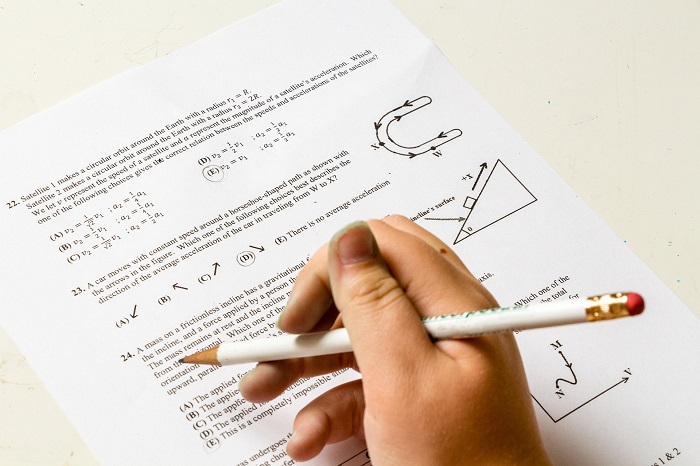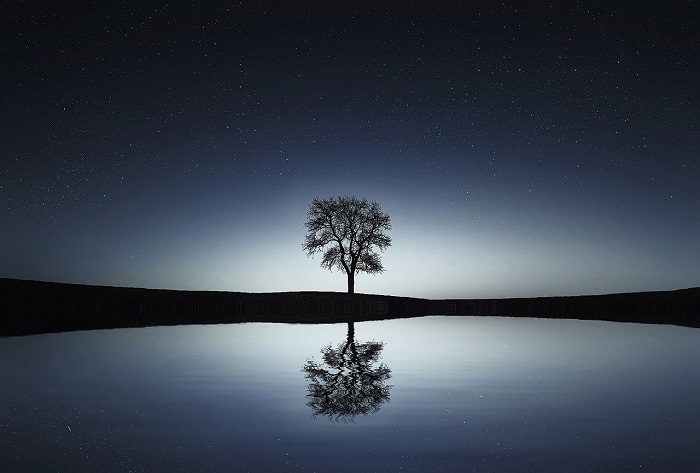
An ulitimate guide for your exam preparation for the board exams. 100% relibale information, prepared by Cambridge trained experts and a proven track record.It contains all the things you need to know before you declare yourself ready for the 0625-IGCSE Physics board exams.
This section will have regular updates with new data discussed. So keep visiting this page daily for new uploads and i shall be eager if you drop me a feedback on your experience while using this section.
The image formed in a plane mirror has the following properties .
1.The image size is equal to the object size
2.The image is the same distance behind the mirror as the object is in from of the mirror The image is virtual The image is laterally inverted
Note: The above laws of reflection hold true for images formed in any smooth surface, like the still water in the image below.

EXAM INSTRUCTIONS: The marking schemes always are kind in that they always use the words, correct to the eye. So , they expect a normal to be a 900 line to the point where the incident ray hits the surface, but still try and always aim to be as accurate as possible, Trying to be accurate will lead you towards perfection always
LAWS OF REFLECTION:
1. The angle of incidence is equal to the angle of reflection.
2.The incident, normal and the reflected ray all lie in the same plane
REFLECTION DIAGRAMS:
RULES FOR CONSTRUCTIONS:
It is a general process to represent the normal with a dotted line Always remember to show the correct direction of the arrows in the correct on the incident and the reflected rays. For regular reflection, the angle of incidence should be equal to the angle of reflection.
IMPORTANT:
It should however be noted that the laws of reflection are valid for regular as well as irregular reflection
REFLECTION
There are two types of reflections, namely, regular and irregular ( diffuse reflection)
Diffused reflection: 1.Diffused reflection is the reflection that occurs on rough surfaces such as the a wooden desk etc. Reflected rays after regular reflection are not parallel to each other
Regular reflection:
Regular reflection is the reflection that occurs at the surface of plane surfaces such as a plane mirror. After reflection,we see that the reflected rays are all parallel to each other.
Wave equation:
The equation that connects the wavelength, amplitude and speed is called as the wave equation. The wave equation is velocity= frequency x wavelength
Speed:
The speed is the distance travelled by a wave per unit time Unit of speed is m/s or kmph
Defining frequency:
Frequency is the number of complete waves passing through a point per second Frequency is the number of complete waves passing through a point per unit timr Frequency is the number of oscillations ( vibrations) per unit time [or] Frequency is the number of vibrations (oscillations) per second Unit of frequency is Hertz ( Hertz)
Defining amplitude:
Amplitude is defined as the distance between the mid-line and the crest of a wave or Amplitude is the distance between the mid line and the trough Amplitude is the height of a wave or the depth of a trough. Unit of amplitude is m
6.3: Describing waves:
Waves can be described using the words such as: Amplitude, frequency, wavelength and speed. A look at the following diagram will help you get familiar with the meanings of the various tems. Waves in which the particles vibrate perpendicular to the direction of travel ( propagation of the waves. Examples of gransverse waves: Water waves, waves on a rope, electromagnetic waves, seismic waves. Transverse waves: The waves in which the particles vibrate parallel to the direction of propagation of the waves are called as longitudinal wave Example of longitudinal waves: Sound waves, waves on a slinky spring.
Topic:6 Properties of waves including light and sound
6.1.Waves transfer energy.They do not transfer matter.
6.2 There are two type of waves namely longitudinal waves and transverse waves
Longitudinal waves :
Longitudinal waves are the waves in whuch the particles vibrate parallel to the direction on motion of the waves.
2.Longitudinal waves are also called as "Pressure Waves" because in longitudinal waves, alternate regions of high pressure (where the particles are close to each other)and low pressure ( where the particles are facr away from each other)are created
3.Examples of longitudinal waves include: Sound waves, waves on a slinky spring.
6.4-REFRACTION:
1. Refraction is the bendiing of light when light changes media( media is the plural of medium)
DIAGRAM TO EXPLAIN REFRACTION: [ comming soon]
Deep water to shallow water
1.When water waves go from deep water to shallow water:
2. Their speed decreases
3. Their wavelength decreases
4. Their frequencu stays the same
Shallow water to deep water
When water waves go from shallow water to deep water:
1.Their speed increases
2. Their wavelength increases
3. Their frequencu stays the same
6.5-REAL DEPTH AND APPARENT DEPTH
I1. magine that an object is placed in a denser medium such as water as shown in the figure above.
2. Now try to view it from air, which is a comparitively rarer medium.
3. It is observed that this object appears to be at a lesser depth as compared to its depth when viwed through water itself[ that is when viewed through the same medium]
4. The difference in depth is caused due to the phenomenon of refraction.
6.5-DIFFRACTION:
Cambridge Instructions for "Diffraction through a narrow slit diagrams":
1. Approximately 3 or more circular waves need to be drawn
2. All the circular wavefronts should stop well of the barrier and should be centred on the slit
3. Wavelengths on both sides of the barrier should have a constant wavelength.
For more notes, stay tuned
Team,
Smart Exam Resources
Write a public review